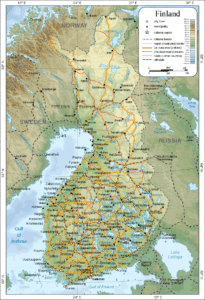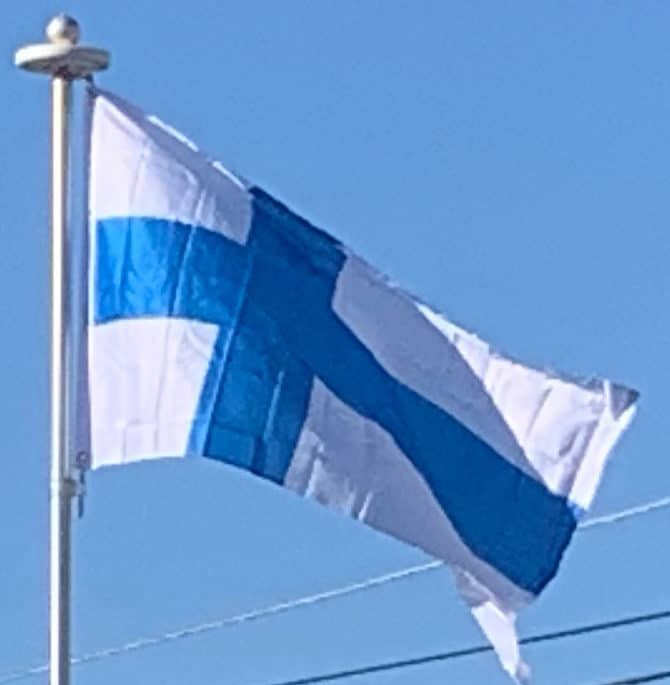Finland reacted cautiously to the collapse of the Soviet Union, but swiftly began increasing integration with the West. On 21 September 1990, Finland unilaterally declared the Paris Peace Treaty obsolete, following the German reunification decision nine days earlier.
Miscalculated macroeconomic decisions, a banking crisis, the collapse of its largest trading partner (the Soviet Union), and a global economic downturn caused a deep early 1990s recession in Finland. The depression bottomed out in 1993, and Finland saw steady economic growth for more than ten years. Like other Nordic countries, Finland decentralised its economy since the late 1980s. Financial and product market regulation were loosened. Some state enterprises have been privatized and there have been some modest tax cuts. Finland joined the European Union in 1995, and the Eurozone in 1999. Much of the late 1990s economic growth was fueled by the success of the mobile phone manufacturer Nokia, which held a unique position of representing 80% of the market capitalization of the Helsinki Stock Exchange.
Geography:
Finland is one of the world’s northernmost countries. Of world capitals, only Reykjavík lies more to the north than Helsinki. The distance from the southernmost point – Hanko in Uusimaa – to the northernmost – Nuorgam in Lapland – is 1,160 kilometers (720 mi).
Finland has about 168,000 lakes (of area larger than 500 m2 or 0.12 acres) and 179,000 islands. Its largest lake, Saimaa, is the fourth largest in Europe. The Finnish Lakeland is the area with the most lakes in the country. The greatest concentration of islands is found in the southwest, in the Archipelago Sea between continental Finland and the main island of Åland.

Much of the geography of Finland is a result of the Ice Age. The glaciers were thicker and lasted longer in Fennoscandia compared with the rest of Europe. Their eroding effects have left the Finnish landscape mostly flat with few hills and fewer mountains. Its highest point, the Halti at 1,324 meters (4,344 ft), is found in the extreme north of Lapland at the border between Finland and Norway. The highest mountain whose peak is entirely in Finland is Ridnitšohkka at 1,316 m (4,318 ft), directly adjacent to Halti.
The retreating glaciers have left the land with morainic deposits in formations of eskers. These are ridges of stratified gravel and sand, running northwest to southeast, where the ancient edge of the glacier once lay. Among the biggest of these are the three Salpausselkä ridges that run across southern Finland.
Having been compressed under the enormous weight of the glaciers, terrain in Finland is rising due to the post-glacial rebound. The effect is strongest around the Gulf of Bothnia, where land steadily rises about 1 cm (0.4 in) a year. As a result, the old sea bottom turns little by little into dry land: the surface area of the country is expanding by about 7 square kilometers (2.7 sq mi) annually. Relatively speaking, Finland is rising from the sea.
